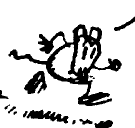We’re still following the march of Coronavirus across the globe, but we’re also taking a break from the outbreak.
Last week’s shortlist of good reads includes a story about gene editing, something on the rats of New York, and a vivid story comparing the care of twin sisters for breast cancer in the UK and the US.
Vision Quest
 So far scientists have tested the gene-editing technique known as CRISPR by first removing the cells from the patient’s body, editing them, and then infusing them back into the body after the work was done. Now, scientists are using CRISPR to fix a genetic defect inside a patient’s’ bod, to correct a rare genetic condition that can lead to blindness. The condition, known as Leber congenital amaurosis (LCA), slowly destroys cells in the retina necessary for vision. Most people living with this condition are functionally blind. In this groundbreaking study, researchers are infusing CRISPR-carrying virus into LCA patients’ eyes. They hope that CRISPR will cut out the genetic mutation that causes LCA and restore some vision.
So far scientists have tested the gene-editing technique known as CRISPR by first removing the cells from the patient’s body, editing them, and then infusing them back into the body after the work was done. Now, scientists are using CRISPR to fix a genetic defect inside a patient’s’ bod, to correct a rare genetic condition that can lead to blindness. The condition, known as Leber congenital amaurosis (LCA), slowly destroys cells in the retina necessary for vision. Most people living with this condition are functionally blind. In this groundbreaking study, researchers are infusing CRISPR-carrying virus into LCA patients’ eyes. They hope that CRISPR will cut out the genetic mutation that causes LCA and restore some vision.
UpTown Rats
Luring rats with bacon, peanut butter, and oats may not sound like a typical day in the life of a scientist, but it was a crucial first step in a new study of rat genomes. In the study, scientists sequenced the genomes of 29 Manhattan rats. They found that particular DNA changes — in genes associated with diet, behavior, and mobility — had become more common in rats from New York City. These changes gave them a leg up in the Big Apple. As scientists start looking for genetic signatures of these so-called “selective sweeps” in rats from other cities, a word of caution. According to one exterminator, rats near Boston “prefer Dunkin’ Donuts pastries and Slim Jims” over peanut butter. Just another example of rats adapting to their environment.
A Tale of Two Sisters

They are twins actually, Nancy and Nora. One lives in the UK, one in the US. Both are being treated for breast cancer. In great detail in this piece in the British Medical Journal, and in an interview with Vice, the story offers a pretty good case study on the two health systems. It’s not really a story about the quality of the actual care. The story is about the burden on patients in the US, even with good insurance, to cover costs, and negotiate with providers.



